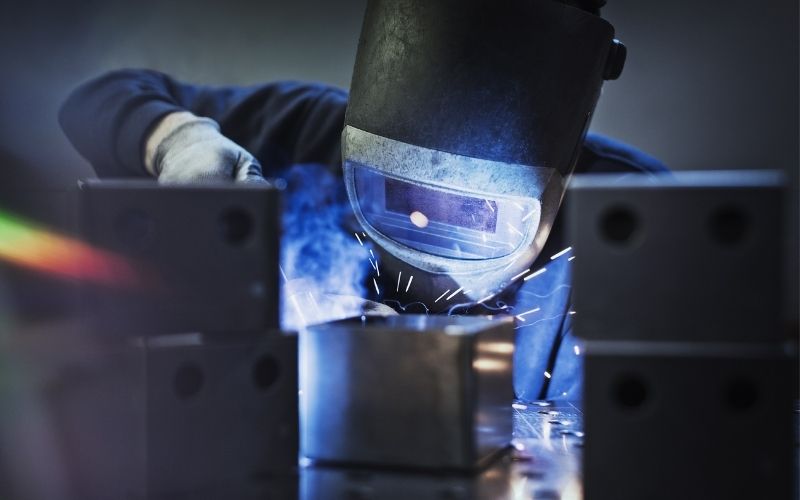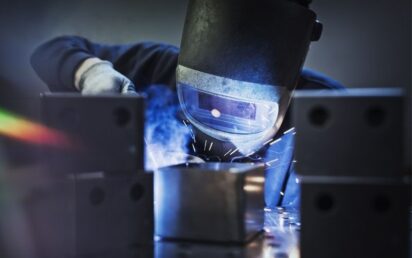The pandemic hit the UK manufacturing scene just like everywhere else, and it has been scrambling to recover. Problems like supply chain disruptions, skill gaps, labor shortages, and the like have plagued the manufacturing industry in the UK amidst political instability and fuel shortages.
As a result of all these, there have been changes made by manufacturers to adapt their processes and maximize profits in the process. These changes have resulted in trends that can be beneficial for the manufacturing industry. Here are seven trends in the UK and how you can make the most of them.
Health and safety
The health and safety of workers have come to the forefront of manufacturing. The recent covid outbreak and an increase in recognition of client mental health and safety have awakened more manufacturers to the safety and health of their workers. While the government has not yet enforced measures in this regard, there is a gradual move to prioritize the safety of workers. Manufacturers are also gradually moving towards dark factories or lights-out manufacturing.
This, in general, would affect how employees are treated, which could, in turn, lead to the retention of skilled labor while moving toward automation.
Lights-out manufacturing
Lights-out manufacturing or dark factories refer to factories that have very little or no human participation. They are gradually becoming the norm. While this might have both positive and negative effects on the manufacturing industry, it is not practicable in every industry. It would definitely impact jobs, and the concept of smart factories is still being treated with a level of skepticism. Manufacturers could still harness this industry as it cuts costs and maximizes profit. As manufacturing continues its evolution, experts believe lights-out manufacturing is an inevitable reality.
Carbon neutrality
With the current wave of planet consciousness, manufacturers have made protecting the planet a priority. Both the government and manufacturers are taking steps to reduce carbon emissions via various means. Manufacturers on one end account for approximately one-third of greenhouse emissions. As a result, they are turning to safer solutions for the planet. Alongside vigorous R&D, manufacturing companies are investing in low carbon and carbon-neutral systems in their manufacturing process.
The government, on the other hand, is investing a lot of resources into battling climate challenges. The policies put in place to support these efforts require manufacturers to transform their entire business model from design to production.
The introduction of AI, VR, AR, and ML in manufacturing
The use of cutting-edge technologies like AI and ML in manufacturing will increase in 2022 as its applications now go beyond mobile devices and desktops. Equipment performance is substantially improved by artificial intelligence and machine learning, which also monitor its performance and safety. Systems can make decisions more quickly and improve quality control thanks to machine learning (ML), which builds on AI’s ability to learn how to perform tasks more effectively.
The use of virtual reality and augmented reality in the day-to-day running of manufacturing operations will increase too. Modeling, adjustments, and in-the-moment rendering of products would greatly benefit from AR and VR usage. These technologies would also facilitate long-distance collaborations between engineers and product designers.
Supply chain management
Carrying over supply chain issues from Covid 19 is expected to persist until 2022, resulting in a global shortage of materials, higher energy costs, and delays. On the other end of things, consumer needs have not died down at all, and as a result, manufacturers are left scrambling for ways to meet up with increasing demands. Manufacturers are taking proactive steps in this regard, doing everything possible to unclog the wheel while constantly communicating with customers and other interested parties.
Predictive maintenance
Predictive maintenance refers to maintenance that predicts a possible fault or outcome and forestalls them. It is not a new phenomenon and has been a subject in the manufacturing industry for a couple of years now. In 2022, there is going to be a rise in the popularity of this measure. According to professionals, financial losses can be cut down by up to 50% if these forms of maintenance are properly executed. This will definitely spur more manufacturers to adopt predictive maintenance. With the rise of technology in the maintenance process, most industrial machines now offer real-time data that aid in predicting possible manufacturing mishaps and maintaining the system in such situations.
Enterprise resource planning software
Enterprise resource planning software has been on the rise in recent years, as small and mid level manufacturers and businesses have begun to see their importance in their business process. This trend is not coming to an end anytime soon. Software like Katana ERP offer a range of solutions that address the challenges manufacturers face. These solutions include optimizing supply chain, collating real time data to help manufacturers make informed decisions, automate and streamline core processes, and other important solutions.
Additive manufacturing (aka 3D printing)
There are many reasons why 3D printing technology is gaining popularity, one of which is how little it depends on a supply chain. Predictive maintenance is made possible by 3D printing or additive manufacturing, which is already revolutionizing business. This facility’s inclusion in the production network enables on-site printing of some replacement parts and essential design parameter changes. Greater productivity, more design freedom, and higher-performing products are all possible thanks to the quicker and more cost-effective production of more reliable and efficient components.
Conclusion
All of these trends are significant and are already guiding the manufacturing trajectory of the nation. Manufacturers who intend to stay active and surmount the challenges facing the industry have to take note and flow with these trends.


